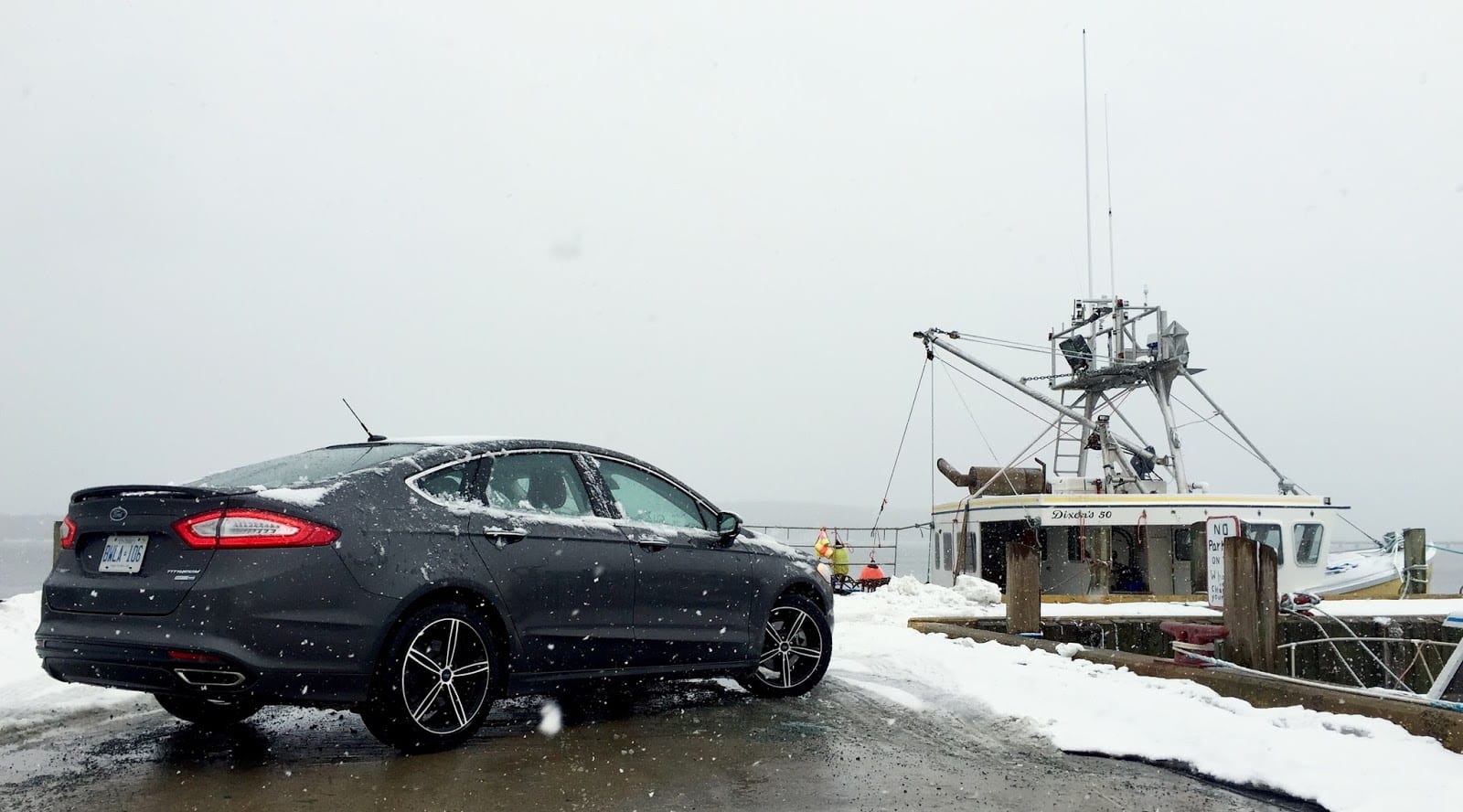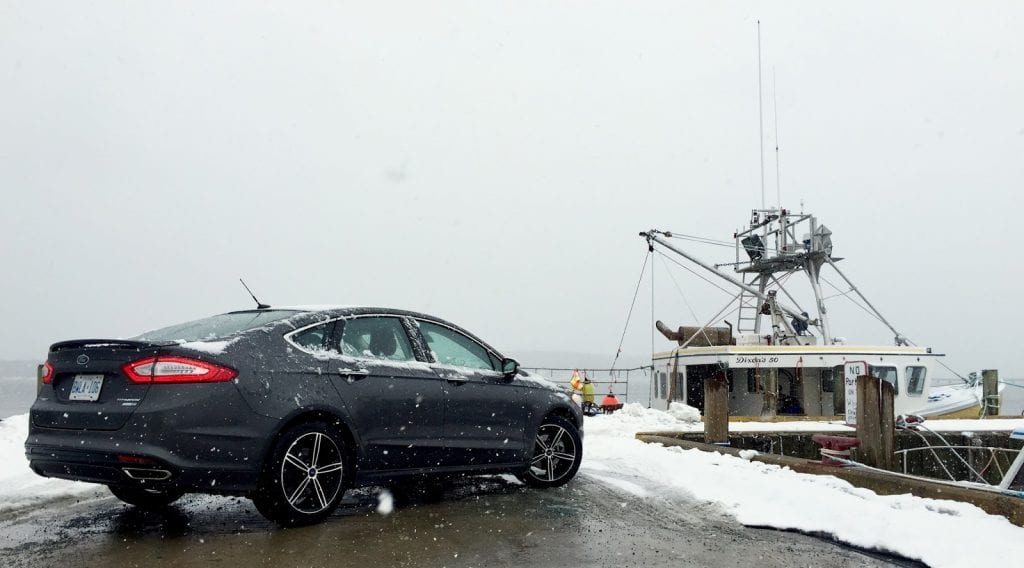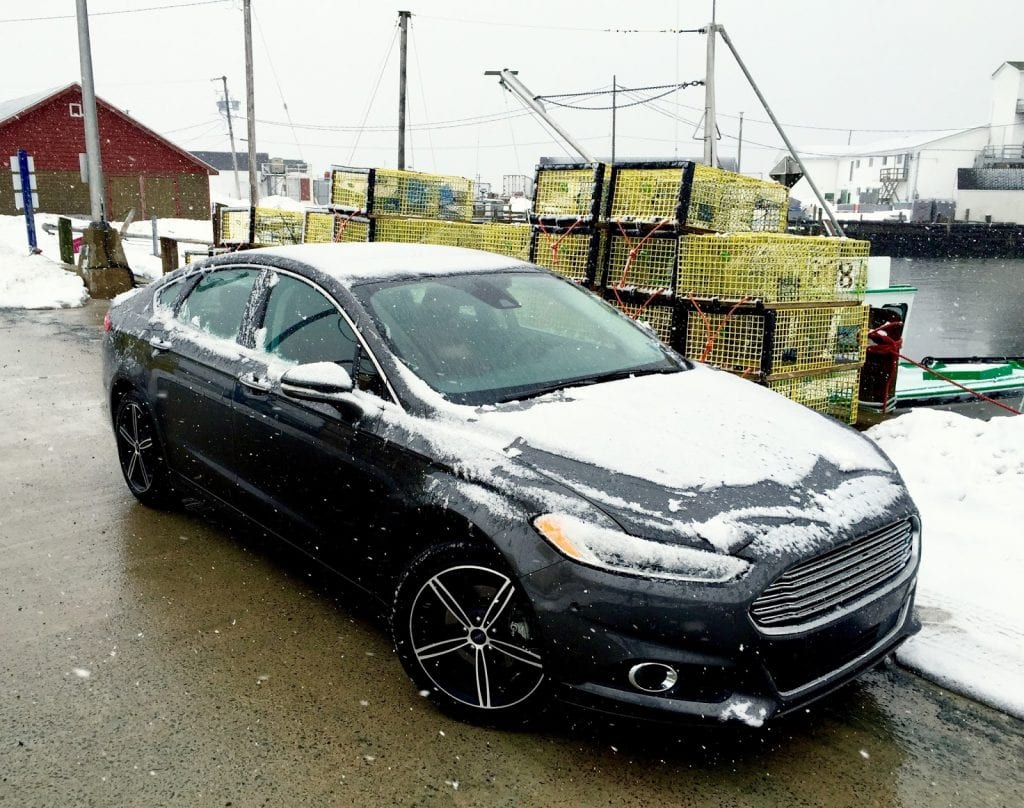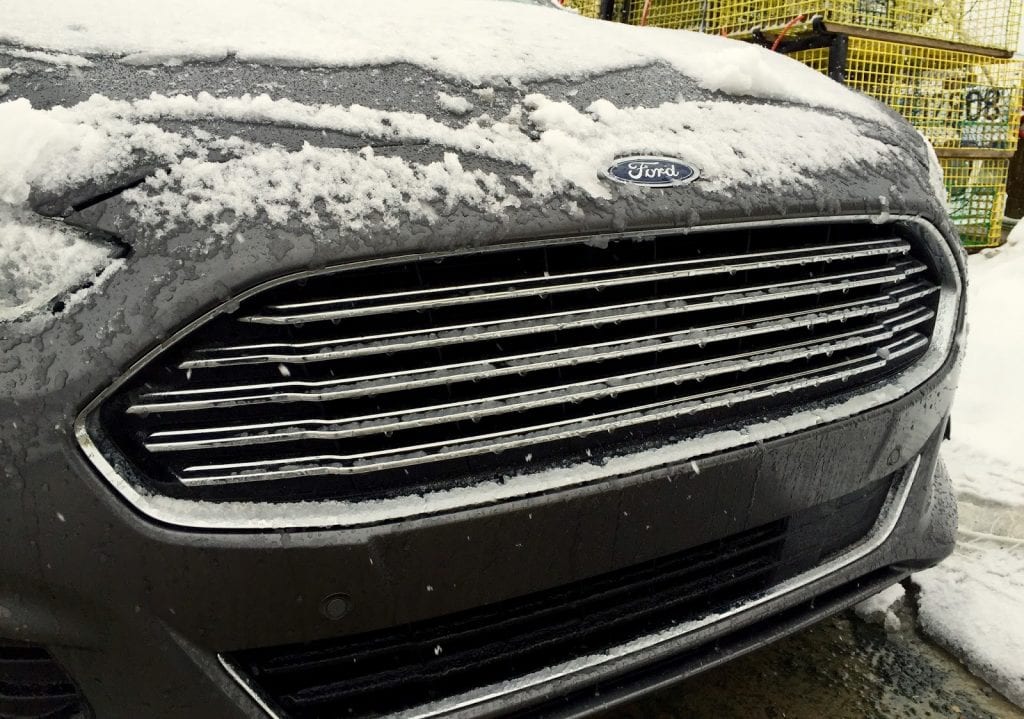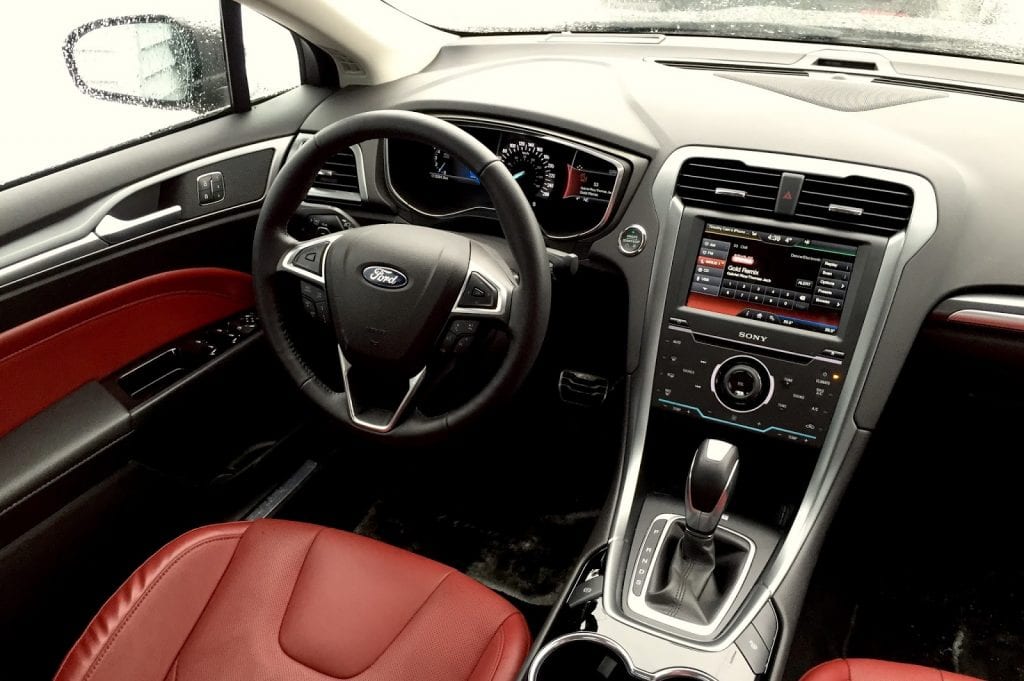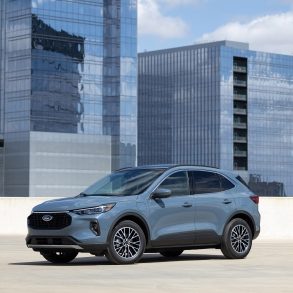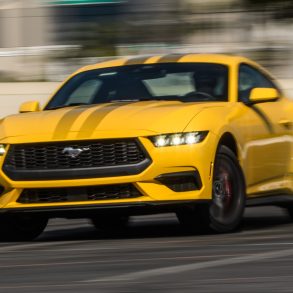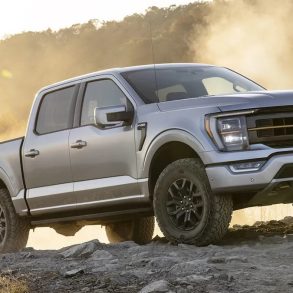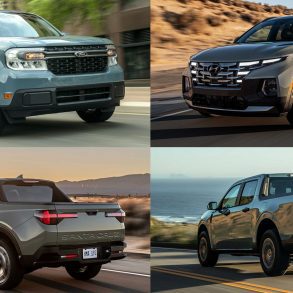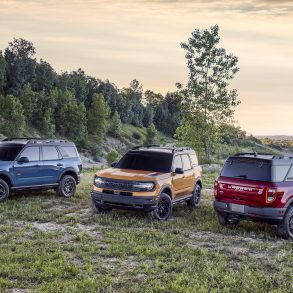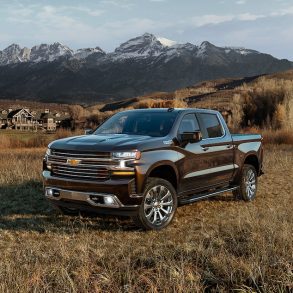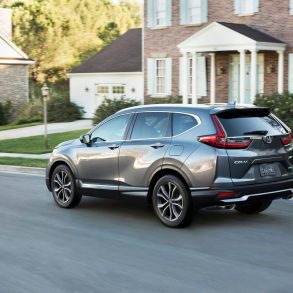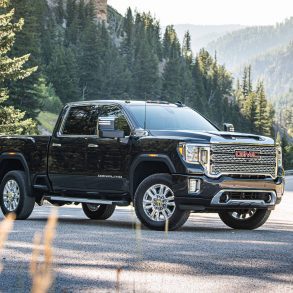It’s a Detroit midsize sedan that I drove just for the sake of driving. That’s a verdict in and of itself.
This heavily optioned 2015 Ford Fusion, a Titanium EcoBoost AWD model loaned to us by Ford Canada for the final week of March, isn’t perfect.
| THE GOOD • Perfect ride/handling balance • Rare all-wheel-drive • Pleasant steering • Still looks good • Abundant tech |
THE BAD
• Rear seat not midsize-worthy
• Don’t touch MyFordTouch
• It’s not that quick • Tasteless wheels • Some boost, no Eco |
But from the standpoint of on-road dynamics, the Fusion does what only a couple other intermediate sedans currently on the market can do: encourage their owner to take the long way home.
The Fusion’s imperfections are notable, however, perhaps to a greater degree because the midsize Ford excels at the act of bringing its pilot joy. According to my Grand Caravan-driving brother, also a father of four, the Fusion’s rear seat, “isn’t bad,” but it lacks the expansiveness of the top-selling midsize car, Toyota’s Camry.
|
2015 FORD FUSION TITANIUM AWD
Base Price: $34,999 * As-Tested Price: $42,434 * Drive Type: front-wheel-drive Transmission: 6-speed automatic Engine: 2.0L DOHC 16-valve I-4 turbo
Horsepower: 240 @ 5500 rpm ‡ Torque: 270 lb-ft @ 3000 rpm Curb Weight: 3681 pounds
Length: 191.7 inches Width: 72.9 inches Height: 58.1 inches Wheelbase: 112.2 inches Tires: Goodyear Eagle LS2 Tire Size: 235/45R18 Passenger Volume: 2911 litres Cargo Volume: 453 litres EPA City: 22 mpg EPA Hwy: 31 mpg
NRCAN OEE City: 9.5 L/100km NRCAN OEE Hwy: 6.3 L/100km Observed: 19.3 mpg Observed: 12.2 L/100km * Canadian dollars, includes $1700 in fees. ‡ on premium fuel. 231 on regular. Fusion base MSRP: $24,199 Fusion AWD base MSRP: $31,499 MPG fuel economy ratings from the Environmental Protection Agency. L/100km ratings from the Canadian Office of Energy Efficiency’s new 5-cycle testing. |
Although I’ve spent enough time now with MyFordTouch to find it sufficiently sensible, the system continues to be just plain slow. Why am I waiting and waiting and waiting for climate control options to appear after I start the car? Interior material quality is a mix of pleasant (steering wheel and armrests, for example), adequate (dash top and door surfaces) and disappointing (matte black button surround on the centre stack.)
On the subject of performance, this top-flight 2.0L turbo is merely decent. In a world in which the three best-selling midsize nameplates continue to buck the no-V6 trend of their slower-selling rivals, this four-cylinder comes up 37 ponies short (on regular fuel) of the Toyota Camry’s 3.5L V6. Moreover, our particular all-wheel-drive Fusion tips the scales with an extra 201 pounds. (Titanium front-wheel-drive Fusions are 155 pounds lighter than our car.)
In other words, there’s enough boost, but the Fusion never left me with the I-can’t-believe-it’s-this-fast feeling engendered by V6-engined versions of the Camry, Honda Accord, and Nissan Altima. In this age, that’s what the most powerful powerplant in a multi-engine lineup should do. 0-100 kph in 7.3 seconds, seriously? At least the Fusion’s all-wheel-drive system allows power to be applied to pavement in a hurry, with none of the excessive wheelspin of nearly all its rivals.
So if the Fusion is sufficiently but not substantially boosted, where does it rate on the eco front? Our tester was a drinker, averaging 12.2 L/100km in a mix of city and highway driving over the course of a week. It’s rated by Natural Resources Canada at 9.5 in the city; 6.3 on the highway. In our hands, the poor mileage wasn’t an anomaly. The last time we tested a Fusion with the same powertrain, in the spring of 2013, it averaged 12.8 L/100km.
The interior’s not perfect, the car isn’t that quick, and it consumes more fuel than the Camry V6 we just drove in the dead of winter, yet here I am saying this is the one I’d choose to drive.
True, a Mazda 6 is the more agile car, but it’s missing 30% of the Fusion’s torque. And while the Mazda handles at an expert level when pushed really hard, it’s not nearly as serene as the Fusion, which rides firmly but never allows the outsold world’s rough pavement to be publicized inside the cabin.
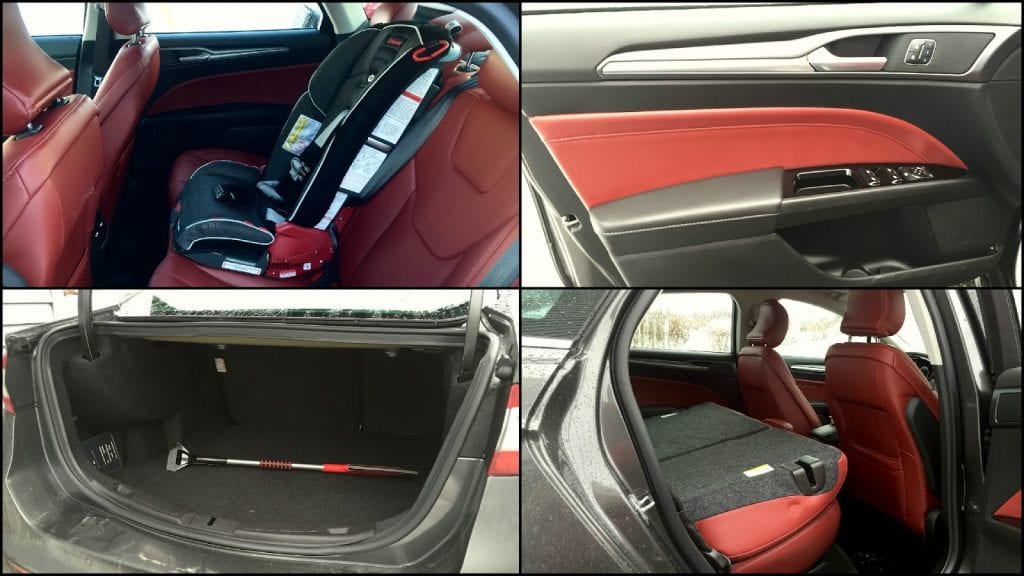 |
| All Photo Credits: Timothy Cain ©www.GoodCarBadCar.net Click Any Of Images For A Larger View |
This Fusion, wearing Goodyear Eagle LS2s (235/45R18s) doesn’t ride as firmly as the most aggressive Accords, either, and I prefer the way its direct steering projects signs of life; the way it progressively builds up its weight. Ford didn’t build an outright sports sedan here – there’s plenty of room for this chassis to morph into an ST and a need for the automatic transmission to gain enthusiasm – but it’s enjoyable to drive in all circumstances, regardless of speed.
That’s a noble achievement in an age of sterilized transportation, an age in which the endless pursuit of refinement shuts out most manifestations of interactivity.
As for the Fusion Titanium’s optional extras, because they did nothing to alter the on-road behaviour, they had little impact on the way I viewed the car’s positive aspects.
In Ford Canada’s pricing scheme, the $34,999 Magnetic Metallic Titanium 2.0L EcoBoost AWD was topped off with a $1500 driver assistance package (which includes blind spot assist, lane departure warning, lane keep assist and more), the $600 active park assist (always a wonder), $1500 adaptive cruise, $1250 sunroof, a $795 red leather appearance package which included cool-in-the-early-’00s 18-inch wheels, a $200 heated steering wheel, $600 for heated and cooled front seats, $200 inflatable rear seat belts, and a $800 navigation system for a total above $40K.
Don’t judge the Fusion based on such an over-equipped sticker. As of this writing, only 9% of the Fusions in stock at GCBC’s three local Ford dealers are fitted with all-wheel-drive. Their average sticker price falls below $40,000.
This $42,434 car, therefore, is not a typical Fusion, but at its core it always displays the best and worst of the Fusion lineup: good looks, a stiff structure, a big trunk, an EcoBoost engine which lacks eco, somewhat poor packaging, and, most importantly, a European appetite for back road frolicking.
RECOMMENDED READING
Historical Monthly & Yearly Ford Fusion Sales Figures
2015 Ford Mustang V6 Driven Review
2015 Ford Escape Titanium AWD Driven Review

